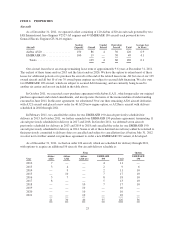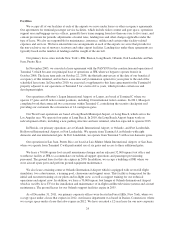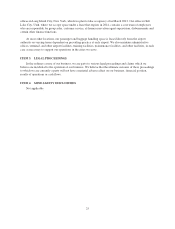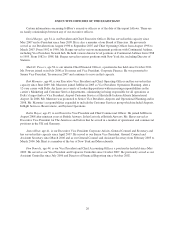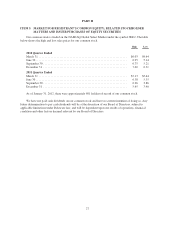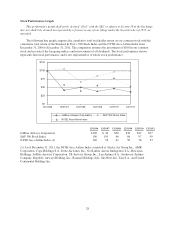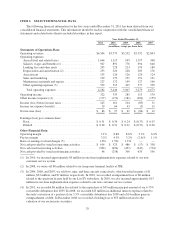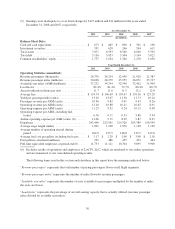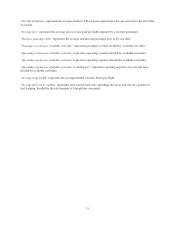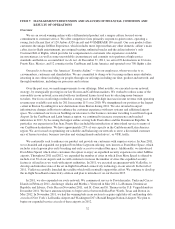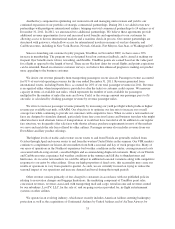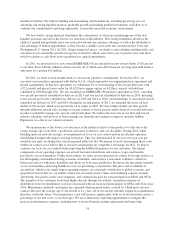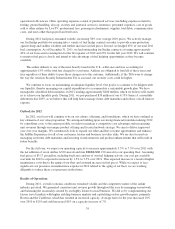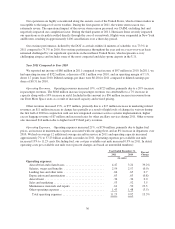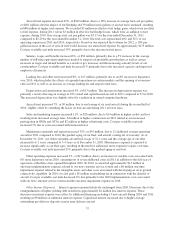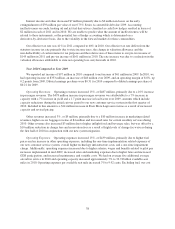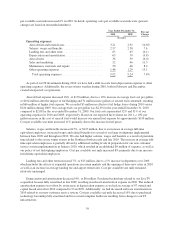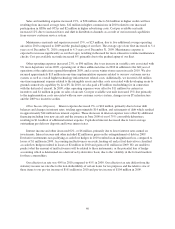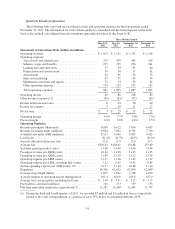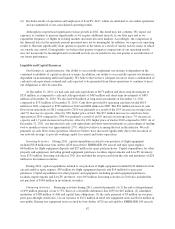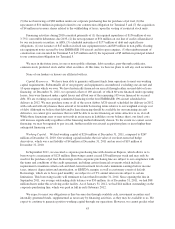JetBlue Airlines 2011 Annual Report Download - page 43
Download and view the complete annual report
Please find page 43 of the 2011 JetBlue Airlines annual report below. You can navigate through the pages in the report by either clicking on the pages listed below, or by using the keyword search tool below to find specific information within the annual report.Another key component in optimizing our route network and managing unit revenues and yield is our
continued expansion of our portfolio of strategic commercial partnerships. During 2011, we added seven new
partnerships with prestigious international airlines, bringing our total commercial partnerships to 14 airlines as of
December 31, 2011. In 2012, we announced two additional partnerships. We believe these agreements provide
additional revenue opportunities for us and increased travel benefits and opportunities to our customers by
allowing access to diverse international markets and a seamless check-in process. Our current partnerships are
structured with gateways, which allow access for international travelers on many of our key domestic and
Caribbean routes, including in New York, Boston, Newark, Orlando, Fort Meyers, San Juan, or Washington DC.
Since re-launching our customer loyalty program, TrueBlue, in November 2009, we have seen a 30%
increase in membership. The program was re-designed based on customer feedback, and is aimed at making our
frequent flyer benefits more robust, rewarding, and flexible. TrueBlue points are earned based on the value paid
for a flight as opposed to the length of travel. There are no blackout dates for award flights and points expirations
can be extended. Based on extensive customer surveys, we believe this enhanced program is making our product
more appealing to the business customer.
We derive our revenue primarily from transporting passengers on our aircraft. Passenger revenue accounted
for 91% of our total operating revenues for the year ended December 31, 2011. Revenues generated from
international routes, including Puerto Rico, accounted for 26% of our total passenger revenues in 2011. Revenue
is recognized either when transportation is provided or after the ticket or customer credit expires. We measure
capacity in terms of available seat miles, which represents the number of seats available for passengers
multiplied by the number of miles the seats are flown. Yield, or the average amount one passenger pays to fly
one mile, is calculated by dividing passenger revenue by revenue passenger miles.
We strive to increase passenger revenue primarily by increasing our yield per flight which produces higher
revenue per available seat mile, or RASM. Our objective is to optimize our fare mix to increase our overall
average fare while continuing to provide our customers with competitive fares. When we enter a new market our
fares are designed to stimulate demand, particularly from fare-conscious leisure and business travelers who might
otherwise have used alternate forms of transportation or would not have traveled at all. In addition to our regular
fare structure, we frequently offer sale fares with shorter advance purchase requirements in most of the markets
we serve and match the sale fares offered by other airlines. Passenger revenue also includes revenue from our
Even More ancillary product offerings.
The highest levels of traffic and revenue on our routes to and from Florida are generally realized from
October through April and on our routes to and from the western United States in the summer. Our VFR markets
continue to complement our leisure-driven markets from both a seasonal and day of week perspective. Many of
our areas of operations in the Northeast experience bad weather conditions in the winter, causing increased costs
associated with de-icing aircraft, cancelled flights and accommodating displaced customers. Many of our Florida
and Caribbean routes experience bad weather conditions in the summer and fall due to thunderstorms and
hurricanes. As we enter new markets we could be subject to additional seasonal variations along with competitive
responses to our entry by other airlines. Given our high proportion of fixed costs, this seasonality may cause our
results of operations to vary from quarter to quarter. As such, we are currently focused on trying to reduce the
seasonal impact of our operations and increase demand and travel during the trough periods.
Other revenue consists primarily of fees charged to customers in accordance with our published policies
relating to reservation changes and baggage limitations, the marketing component of TrueBlue point sales,
concession revenues, revenues associated with transporting mail and cargo, rental income and revenues earned
by our subsidiary, LiveTV, LLC, for the sale of, and on-going services provided for, in-flight entertainment
systems on other airlines.
We operate in an evolving industry, which most recently includes American Airlines entering bankruptcy
protection as well as the acquisitions of Continental Airlines by United Airlines and of AirTran Airways by
33


